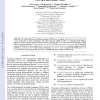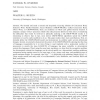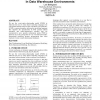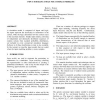1826 search results - page 56 / 366 » Using Random Forests in the Structured Language Model |
CII
2010
13 years 8 months ago
2010
: The Unified Enterprise Modelling Language (UEML) aims to support integrated use of enterprise and IS models expressed in a variety of languages. The achieve this aim, UEML provid...
ACL
1997
13 years 10 months ago
1997
Several recent efforts in statistical natural language understanding (NLU) have focused on generating clumps of English words from semantic meaning concepts (Miller et al., 1995; ...
JACM
2000
13 years 8 months ago
2000
We identify and study a natural and frequently occurring subclass of Concurrent Read, Exclusive Write Parallel Random Access Machines (CREW-PRAMs). Called Concurrent Read, Owner Wr...
DOLAP
1999
ACM
14 years 1 months ago
1999
ACM
We use the event-entity-relationship model (EVER) to illustrate the use of entity-based modeling languages for conceptual schema design in data warehouse environments. EVER is a g...
WSC
1998
13 years 10 months ago
1998
A simulation model is composed of inputs and logic; the inputs represent the uncertainty or randomness in the system, while the logic determines how the system reacts to the uncer...




